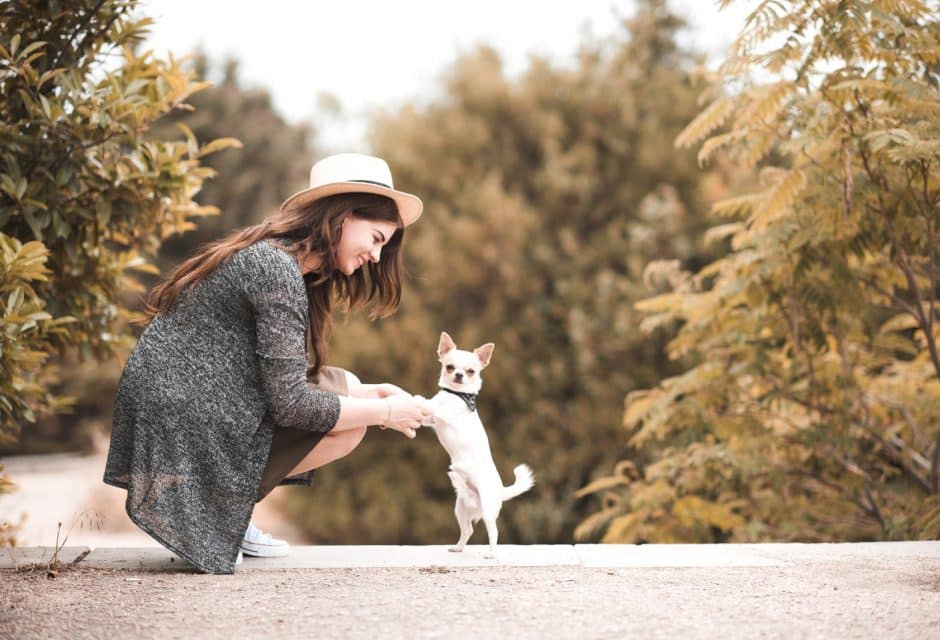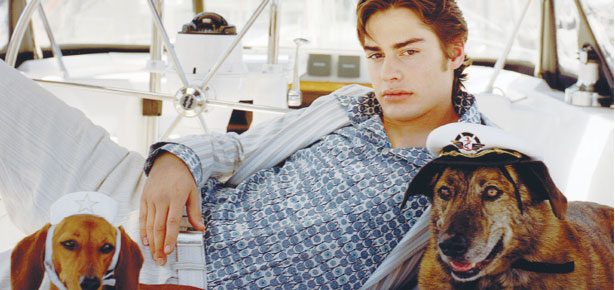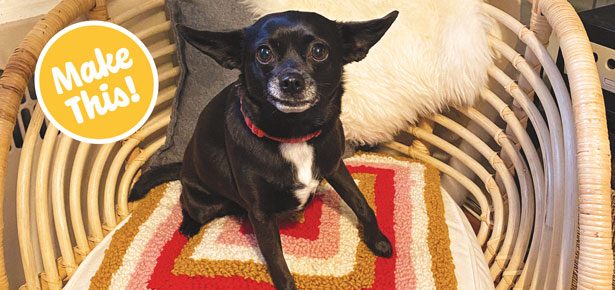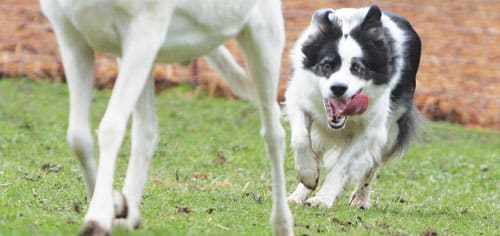
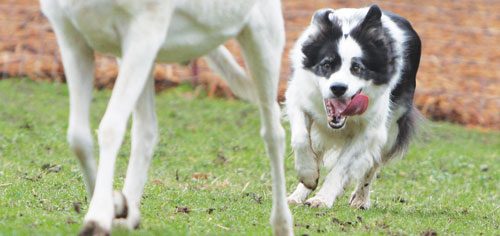
Herding
Under the watchful gaze of the strong-eyed dog.
Sharp puppy teeth followed me up the stairs like a shark
out of water, nipping at my heels. Drawing blood. Every
night, as I climbed the stairs to go to bed, my new pup
was tight on my heels, delighting in his little game.
Bruno’s behaviour had me bewildered, but after a chat with
our trainer, I had more respect for the little guy. I learned that
Bruno was just exercising his instinctual abilities, doing what
Border Collies have been bred to do: herding—one of the oldest
canine professions. Little Bruno was herding me. I was his
sheep.
Border Collies are among the many breeds of dogs, such as
the Australian Cattle Dog, Bouvier des Flandres, Canaan Dog,
German Shepherd, Corgi, Old English Sheepdog, Schnauzer,
and Poodle, that possess a herding instinct inherited from
their canine ancestors which hunted in packs by gathering and
driving their prey. These dogs benefit by being kept mentally
and physically active with opportunities
to work. Even if you don’t have that
sprawling ranch under the big sky of
Montana, there are opportunities offered
to challenge you and your dog. The
American Kennel Club (AKC), Canadian
Kennel Club (CKC), American Herding
Breed Association (AHBA), and United
States Border Collie Handler’s Association
(USBCHA) are among the many organizations
that offer trials, training clinics, and seminars. Instinct testing is offered to determine a dog’s
interest in livestock. Herding trials, held in arenas or open fields,
include classes for the various experience levels such as Started,
Intermediate, and Advanced.
On Whidbey Island in Northern Puget Sound near Seattle,
Washington, Susan Crocker runs a farm that includes a 20-acre
field where she holds several USBCHA trials each year and two
smaller trial arenas for AKC and AHBA events. There are other
smaller areas where she trains herding dogs.
“I have three retired Australian Cattle Dogs and another that’s
currently the self-appointed chore dog, though he trials, too,”
Crocker says. “I also have two Australian Kelpies that I trial in all
venues. Though I have several students,
my main focus is training and
trialing my own dogs, and managing
the farm, which takes considerable time
and labour for one old lady!”
Working stock dogs are carefully
bred for their special abilities and can
sell for more than $20,000. These dogs
are used to fetch individual livestock,
gather them into a group (herd), drive
(move the flock or herd in a specific
direction), and maintain them in a designated
area. Where sheep range freely
over large areas, fetching and gathering dogs are used more often,
while boundary/continental dogs patrol boundaries, keeping stock
out of crops and protecting them against predators.
The dog’s working style is often defined by his stance and
whether he’s “strong-eyed” or “loose-eyed.” Strong-eyed dogs tend
to work silently and intensely, shoulders low to the ground, controlling
livestock with their eyes. Speed and drive are a must. Looseeyed
dogs have an upright stance and don’t try to control with their
eyes. Body positioning and barking are used for control.
At Cheryl Cooper’s farm located in Maple Ridge, a town situated
just shy of the Coast Mountains of British Columbia, llamas,
miniature ponies, chicken, and sheep meander near a quaint red barn. Cooper, a former competitor in herding, now uses her expertise to teach.
A split-rail fence surrounds the working pen where Ricochet, a black and white
Border Collie, is using that hard-eyed stare, willing the gate to open. He knows
it’s time to work. Ruger a ten-year-old red Border Collie, excitedly runs the
length of the fence.
“Ruger’s a rescue dog, terrified of anything above a whisper,” Cooper says.
“Sheep herding does help. They need a job. I can put food in the field and as
long as there are sheep in the field, the dogs won’t touch the food.”
Cooper opens the gate and Ricochet slides through. Like a magician, Cooper
raises her blue four-foot-long shepherd’s wand (aka “stock stick”). The field
becomes alive with action. Ricochet circles, quick, smooth, and powerful.
Sheep scurry. He rounds them up, driving them toward Cooper. Her calls play
out like a song:
Shhhh, shhhh, away, shhhh.
Go by, go by, walk up, go by.
Look back, git her, git her out, away.
Good boy, lie down. That’ll do Ric,
that’ll do.
Erin Moore, professional dog walker,
brings Piper, her three-year-old Border
Collie, through the gate. They’ve been
training for six months. Piper walks
steadily toward the sheep, eyes staring—
then charges. Cooper raises her wand.
Piper moves out.
“What we want her to do is the ‘outrun,’”
Cooper explains. “That’s why I use
the wand, to keep her away.” She calls
out: “Away—good girl—come on, walk
up.” “Go by” means the dog should work
around the sheep clockwise. “Away”
means counterclockwise. Piper circles and
drives the sheep in.
When five-month-old Tyson, a first-timer,
enters the ring, Cooper keeps a watchful
eye. “He’s never been on sheep,” she
says. “We don’t know how he’ll be. We
have no idea whether he’s going to show
any interest. We have him on a long lead
so we can stop him and pull him away.”
Tyson sees the sheep, runs out, and
returns. Ricochet joins him in the ring.
“Ric always comes out with me when
I do a new dog,” Cooper says. With his
hard-eyed stare controlling the sheep, Ric
circles, then pauses, shoulders hunkered
down. The sheep freeze.
Tyson, pup that he is, thinks it’s a
game and runs at Ric’s tail. Nip! Ric stays
fixed, intense. Tyson does another run-by.
No reaction. Ric is working, silently and
swiftly circling the sheep. Driving them.
Aha! Tyson’s instinct stirs. He follows
Ric’s lead. The two work together, Tyson
barking wildly.
“Barking shows he’s not serious. It’s
all fun to him,” Cooper explains. “Look
back!” she suddenly calls. Ricochet runs
back to one lone sheep and brings it to
the herd.
Acting mainly on instinct, Ric and
Tyson have done what herding dogs have
done for centuries. They’ve rounded up
the herd.
Once outside the pen, Ric’s strong eyes
continue to pierce the gate; he’s still intent
on working.
That evening, I hear again whispers
of Cooper’s shepherd song—“Shhhh, go
bye, away”—as my little pup, tight on my
heels, delighting in his little game, nipping
away, rounds me up the stairs.
Join the newsletter and never miss out on dog content again!
"*" indicates required fields
By clicking the arrow, you agree to our web Terms of Use and Privacy & Cookie Policy. Easy unsubscribe links are provided in every email.


